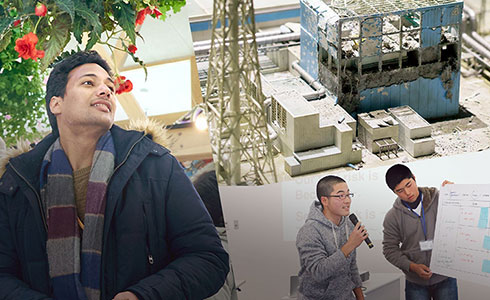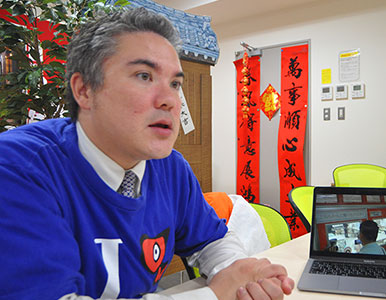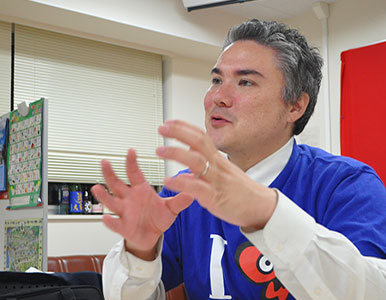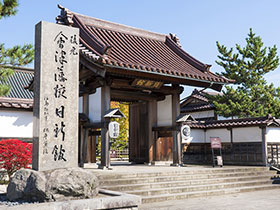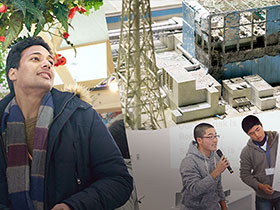March 11 2011 was the day of the Great East Japan Earthquake. Fukushima Prefecture is the only place in the world to experience an earthquake, tsunami, nuclear disaster, and subsequent reputational damage, all at the same time. Despite this, Fukushima Prefecture is full of people looking forward, holding onto hope, and fighting for a bright future, regardless of the hardships they face.
What is Hope Tourism?
Hope Tourism is a project started in Fukushima Prefecture, which runs educational trips allowing participants to reflect on learning from the disaster and overcoming challenges in the face of adversity. This is achieved through its participants seeing the current state of Fukushima with their own eyes, and meeting people working tirelessly for a bright future.
William McMichael of Fukushima University, who is involved in the project and in training interpreting guides, spoke to us about Hope Tourism.
"The year after the disaster, I started inviting students from abroad to Fukushima University as part of a fieldwork program (Fukushima Ambassador Program). Students would visit various areas in the prefecture and interact with local people.
Program participants always return home as Fukushima fans. This is true of Hope Tourism participants too. Ignorance breeds misunderstanding, but knowledge allows understanding and connection."
The 3 pillars of Hope Tourism
Hope Tourism has 3 main pillars: "Seeing," "Listening," and "Reflection."
"Scenes of broken buildings, streets abandoned during evacuation orders, and piles of huge, black bags leave deep impressions on visitors. But seeing these shocking aspects of Fukushima allows visitors to fully understand and reflect on the strength of its people when listening to their stories."
The nuclear disaster has led to prolonged reconstruction work in Fukushima. Some areas have remained unchanged since March 11 2011, whereas confident steps towards reconstruction are being taken in many other areas.
Tour participants can see firsthand the real situation in Fukushima, something not always accurately conveyed on television or online.
"The most important thing is talking to local people; listening to their stories and learning about what motivates them. Just visiting these areas alone doesn't afford you the ability to uncover the stories that live here."
This act of connecting visitors with people involved in local reconstruction efforts is at the heart of Hope Tourism.
McMichael continues, "I think 'Expressing & Connecting' can be added as the 4th pillar of Hope Tourism - a pillar of hope."
Participants discover hope in the places they visit, and, in turn, local people feel hope through their interactions with participants.
Participating in a Hope Tourism tour
Hope Tourism has organized school trips, staff training tours, area observation tours, and more, to fit the needs of participants.
"Science and Engineering, Radiology, Psychology, Sociology... no matter your academic background, there is much to learn from the people of Fukushima Prefecture."
Lastly, McMichael smiles and says, "Fukushima Prefecture is home to the story of the Akabeko; a cow that brings good fortune in times of need. When tour participants come and see Fukushima with their own eyes, learn from local people, and share what they learn with those close to them, they will become a beacon of hope for the people of Fukushima, like the story of the Akabeko cow."
*Please note, it is necessary to book appointments with local guest speakers in advance.
Read more→FUKUSHIMA HAMADORI COASTAL AREA
